The garden fork is one of the most important tools one could have living in their shed. Apart from the pick it’s probably the first tool we grab when the job requires a little more grunt. Its multiple pronged action can loosen soil with minimal damage to plant roots; aerate the compost heap; and, divide those clumping perennials without too much fuss.
Most of us gardeners would have at least one garden fork in our arsenal, and some would have a few more. But is it essential to even have one? The answer can only be given based on the type of gardening you enjoy. If you live in an apartment and your garden consists of a small balcony then a digging fork is possibly not required.
And, if your compost heap resides within a tumbler or composter then, again, it’s most likely not going to be needed. But, if you dig in soil then one of these babies is a must-have gardening tool so we listed the best garden fork in Australia today.
More...
Best Value

Premium Choice

Best Garden Forks in Australia for 2025
Product | Our Rating | Price | |
|---|---|---|---|
1. Spear & Jackson Garden Fork SJ-4550DF |  | ||
2. Spear & Jackson Garden Fork SJ-1570AL |  |
Garden Fork Australian Buying Guide
What are Harden Forks Used For?
Here’s a list of possible tasks that a garden fork would be useful for;
- Turning the compost heap
- Dividing clumping plants
- Aerating the soil
- Sifting the soil for small rocks
- Breaking up clay soils
- Aerating lawns
- Dispersing mulch and composts
- Digging up bulbs
- Leveraging small tree root ball when transplanting
What to Look for in a Garden Fork
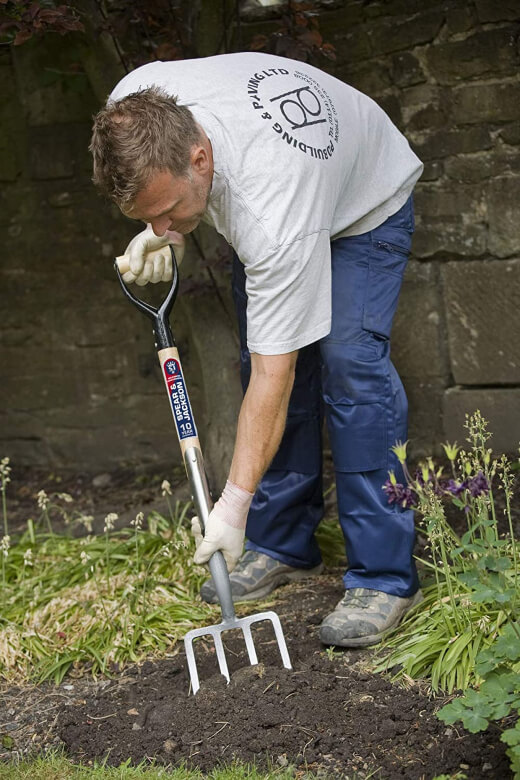
There are just as many opinions as to what constitutes a good garden fork as there are garden forks available. The key things to keep in mind when buying a garden fork is for what purpose will your garden fork play in your garden.
If your soil is fairly loose and friable then most garden forks will probably suit your purposes. However, if your garden beds are filled with rocks or bound with clay then choosing a more heavy duty garden fork would be a better option.
Look for these things;
- Number of tines – a good garden fork should have 4 rather than 3 tines.
- Tine spacing – the closer the tines are together the stronger the garden fork will be.
- Tine rigidity – if the tines on the fork are flexible and show some movement then it indicates how weak the metal is that has been used. Fork tines should be rigid and won’t bend with the first rock they come in contact with.
- Shaft Material – the garden fork shaft can be made of many different materials and the strongest are in this order: fibreglass, stainless steel, steel, wood and poly-propylene. The beauty with fibreglass as opposed to other materials is its ability to resist shock making it easier on your body to use.
- D-Handle – the d-handle should be crafted from rigid materials as well. Often, poly-propylene is used in the manufacture of garden forks and this is due again to softening the shock when a hard object is struck but also because it is more durable.
- Multiple material construction – while a single stainless steel gardening fork may look incredible and last you a lifetime it really pales in usability against a garden fork with steel tines, fibreglass shaft and poly-prop d-handle.
Garden forks are used for lots of different, labour-intensive work, so it’s important to find one that will last many years and get the job done. Here are some materials to look for.
- Forged steel – The best garden forks are made from one solid piece of steel that is shaped in a furnace, as opposed to forks that are assembled out of several different parts and materials.
This will ensure that it can easily withstand the pressure of being pushed deep into the ground, as well as being able to provide good leverage when you are breaking up hard-packed soil, removing rocks or digging out roots. - Aluminium alloy – Many good quality forks are made from an aluminium alloy – a combination of aluminium and other metals. However, aluminium is a very malleable metal which means it bends and twists easily.
This means you really need to make sure the alloy has enough other metals to strengthen the tool. Feel the prongs on the fork, put some pressure on them. If you can bend them yourself (which isn’t out of the question with cheap tools today) then they simply won’t last in the garden. - Comfortable handle and generous shaft - Make sure the handle feels comfortable and the shaft is a reasonable length. Short handles make the tool more versatile, as it’ll be easier to manage in tight spaces, but it also means the work is more labour-intensive.
Longer handles provide more leverage which can make the job easier, depending on what you are doing, but also make it harder to use in tight spaces. Think about how you think you will be using the tool and to help decide what you need most.
Different Types of Garden Fork
There are several different types of garden fork, each slightly different for different jobs. A standard garden fork is the best all-rounder, although a short, small garden fork is a useful addition too.
- Standard garden fork – This is a large fork that’s similar in size to a construction-size spade. They’re tough but versatile, and can take care of most jobs around the garden, from aerating soil to turning compost.
- Digging fork – Often called diggers, these are small forks that you can hold and use with a single hand. They are ideal for working close to the ground like when you are weeding, harvesting vegetables or planting seedlings and small plants.
- Compost fork – This is a similar size to the garden fork but usually has sharper tines and a more slender design, like a pitch fork. This makes it easier to lift and shift big chunks of compost, mix in leaves and move compost to a wheelbarrow or flower bed. However, a garden spade usually works just as well.
- Potato fork – This is a much more specialised fork that is particularly useful if you are growing lots of potatoes in your garden or on a farm. The tines are blunted to ensure they don’t damage the potatoes as you dig them up.
Other than the digging fork, all the garden forks are designed to be used in a standing position, using your foot to plant it into the ground and your arms and upper back to supply the power.
Pitchfork vs Garden Fork
The term “spading fork” and “garden fork” seem to be interchangeable in most gardener’s minds. However, there are two main types of garden fork; the hay fork (pitchfork) and the much stronger spading fork. Using either for the wrong job will cause some serious problems – both for you, and your fork.
Hay forks are useful predominantly for their name-sake: hay. They’re lightweight, usually sport a much longer shaft and often don’t offer a D-handle at the operating end. They are a great tool for gardeners when distributing straw mulch, picking up piles of leaves or shovelling new material into the compost heap. But that’s about where their usefulness ends.
The spading fork, on the other hand, is terrifically robust with flattened tines to create a spade effect, a much shorter shaft and a D-handle to help manoeuvre it through your gardening chores. This tool, in the hands of an avid gardener, can weave magic through so many garden tasks that to not have one would be almost unthinkable.
The garden fork has possibly more uses than your yard spade and I can assure you will come out of the shed more often than it as well. So, when selecting a spading fork that’s going to last the distance there are a few things to take into consideration.


Get Your Free Guide:
Master Growing Australian Natives eBook
A Must Have Complete Guide for Every Australian Garden
Get Your Free Guide:
Master Growing Australian Natives eBook
A Must Have Complete Guide for Every Australian Garden
What to Consider When Selecting a Spading Fork
The first one is the shaft. Some are constructed using soft or hardwood timbers. Others swear by fibreglass and there are even a few steel options kicking around today as well. My advice, for what it’s worth, is to steer clear of soft timber shafts and fibreglass ones as well.
The hardwood timbers are less likely to shatter compared to their softer, less durable, counterparts yet they’re better at absorbing shock than the fibreglass forks. Stainless steel is a great option if you’re looking for something that’s going to last a lifetime as it doesn’t rust or corrode and won’t break.
The tines are the next important place to consider. The distance apart and the length of the tines are paramount and should be overviewed with the quality of the steel used to manufacture it.
If the tines are hollow it offers a much lighter spading fork but the chances of it buckling on a stone or corroding from the inside is increased. If they’re solid tines then expect to be building some muscles over time but at least they will last the distance.
The final consideration is the handle. It should be ergonomically well-fitting plus it should be joined well to the shaft. Many of the cheaper spading forks have a single rivet holding the handle to the shaft and over time these can loosen and make your fork downright annoying to use.
Opt for a handle that is precast or welded – yes plastic can be welded – to the shaft and seems rigid enough to stay secure. Once you’ve chosen a spading fork for your requirements then the next trick is maintaining it so that it does last.
Keeping it out of the elements, cleaning it after use and hanging it off the floor in the off-season will go a long way to sustaining its useful life.
How Much Does the Best Garden Fork Cost?
Although no one likes breaking the bank, the best rule to follow here is not to buy cheap. In recent years, many cheap brands have entered the market but the tools they sell just don’t last.
The garden fork is one tool that is very commonly made for ‘cheap’ prices but these tools simply will not stand the test of time. These poor-quality forks are usually under the $30 mark.
Good quality mid-range garden forks will cost about $30-$40 and will likely work well. The best garden fork – a solid steel forged garden fork - will set you back about $70 or more but will last you a lifetime.
Garden Fork Reviews
1. Spear & Jackson Garden Fork SJ-4550DF

Another Spear & Jackson Garden Fork designed with a mirror polished stainless steel tines and a weatherproof hardwood shaft.
Its one piece shaft is split to form a D handle for comfort.
2. Spear & Jackson Garden Fork SJ-1570AL

This Spear & Jackson Garden Fork have a fully forged carbon steel head and socket. Also have a weatherproof hardwood shaft for greater durability.
Garden Forks 2025 Top Picks
Best Value Best Garden Fork


For us, the best value garden fork is the Spear & Jackson Garden Fork SJ-4550DF. It combines simple aesthetics and traditional crafting to make a garden fork that’s simple, unfussy and gets the job done.
It’s ideal for maintaining established gardens, turning compost, or loosening soil in vegetable gardens.
This garden fork has a mirror-finish stainless steel head and tines to help stop soil from sticking to the fork, has a high-quality hardwood shaft, and a comfortable D-shaped handle.
Premium Choice Garden Fork


If you’re handling hardened ground in tough conditions, you need a strong garden fork that’s going to work hard – and last many seasons to come.
The Spear & Jackson Garden Fork SJ-1570AL features a fully-forged, high quality carbon steel tines and head, with a hammer-finish, epoxy-coated head for solid rust-resistance, weather-proofing and durability.
Even with all that steel, this fork remains fairly lightweight at just 2. 45kgs.This makes it our pick for the best premium garden fork that money can buy!
What Can I Use a Garden Fork For?
These are versatile tools that can be used for all kinds of jobs around the garden, whether you have a small, established garden or a rural plot. They are regularly used for:
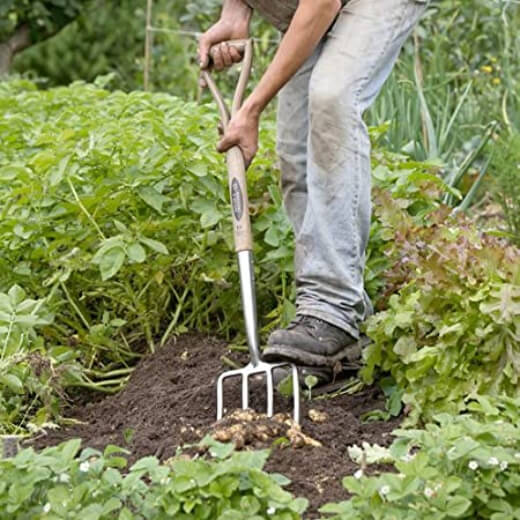
- Aerating soil – Soil becomes compacted over time, becoming harder and harder. This makes it difficult for plant roots to grow through the soil and access water and nutrients.
Typically, areas with compacted soil have stunted plants or are simply bare. Using a fork, you can easily break up the soil in beds and lawns, creating a healthy environment for plant growth.
- Preparing beds – If you are preparing a new flower bed or vegetable garden bed, then a garden fork is invaluable for turning the soil, mixing in compost, mulch and organic matter, and clearing away roots and debris.
- Removing roots – If you have unwanted shrubs and plants, your garden fork is the easiest way to pull out root boles and prepare beds for new plants. Simply use the same technique you would use for removing a rock.
- Turning compost – Home compost beds and bins need to be turned on a regular basis to aerate the compost, mix it thoroughly and promote healthy bacteria that break down your organic matter.
The tines make this a much easier job because they are able to grab and lift the compost more easily than a spade.
- Removing rocks – Garden forks with longer handles can break up the soil around rocks, allowing the tines to slip underneath the rock and providing good leverage to make pulling it out of the ground easier.
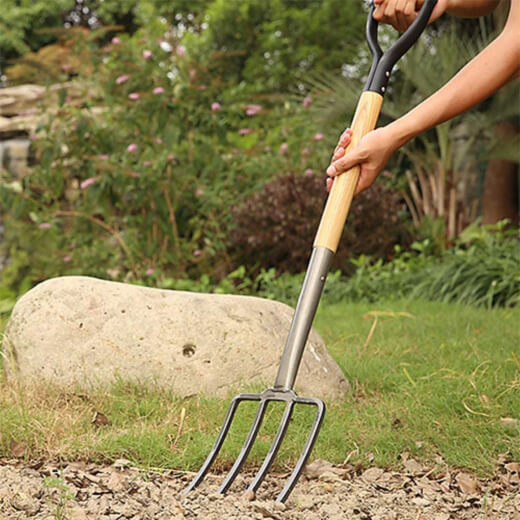
How to Store and Maintain Your Garden Fork
When you’ve invested in the best garden fork, the last thing you want to do is have to replace it before it’s time. The right care and maintenance will keep it in great shape – and it’s all very easy to do.
- Clean – Always clean your garden fork after use, rinsing it down or washing it with a dishwashing liquid or a 10% bleach solution to remove compost, manure, bacteria, fungi and other less pleasant substances.
You can also keep a bucket of clean river sand mixed with linseed oil in your storage shed. Simply plunge the tines into the bucket a few times to clean. - Dry – Dry your fork well to prevent rusting. It’s easiest to just leave it out after washing and let the warm weather do its work. Always put it in a shaded position, however, as the metal can get very hot and the sun will cause the rubber grips to decay.
- Store – Oiling your garden fork will prevent rust. The easiest method is to use the sand and linseed oil mix, but you can rub a thin coating of general-purpose machine oil onto the tines with a clean cloth.
Store in a weather proof shed, storage bench or garage, out of the sunlight and where it cannot fall onto other equipment. It’s a good idea to install a tool rack that will secure your garden fork alongside other tools for easy access and preventing clutter.
Garden Fork Frequently Asked Questions
What is the difference between a garden fork and a digging fork?
Garden forks and digging forks are the same tools, but products marketed as digging forks tend to have tougher tines and better constructions and are therefore better able to dig through tough or compacted soil without damage.
What is a garden fork used for?
Garden forks can be used for limitless jobs in the garden, from lifting plants to dividing clumps of herbaceous perennials. They are great for aerating lawns or working compacted soil too.
Garden forks are generally better digging tools for clay soils than spades, as they loosen the soil and improve drainage as you work.
What is the difference between a spading fork and a digging fork?
Digging forks have flattened tines, designed to slice through the earth before lifting it. Spading forks are generally better for removing weeds, as they pull rather than slice through roots and earth.
What is the difference between a garden fork and a border fork?
Border forks are smaller versions of garden forks, designed for leaning in and around plants. Their handles are shorter too, so you can work them more easily with one foot and less purchase on your back foot.
How do you use a weeding fork?
Rather than simply digging into the soil and tugging, push your weeding fork in around the base of weeds, and twist it back out. This helps to loosen the soil around stubborn roots and should result in more of the root coming out in one go.
What are the prongs of a garden fork called?
The prongs of a garden fork are called tines, or tynes. Sometimes also referred to as prongs or teeth, these elongated parts of your garden fork are used to separate soil before lifting it.
Is a garden fork good for weeding?
Garden forks are much better than spades for weeding as they remove the root along with the soil, by dragging it rather than slicing through it. For smaller areas or weeding between rows of vegetables, garden hoes are more effective tools.
Is forking good for your lawn?
There is no situation I can think of where forking your lawn is bad. On dry lawns, forking allows moisture to get further down to the roots, and helps retain the soil structure for a healthier lawn. On damp or waterlogged lawns, forking helps to improve drainage.
How do you fork over soil?
Forking over soil, particularly in new gardens can be a back-breaking chore, so don’t rush it. It’s important to use both feet for proper purchase, and start from the further corner, working in logical rows, so you don’t compact the soil by walking back over it.
How do you lift potatoes with a garden fork?
To lift potatoes with a fork, without harming your crop, start between two rows, and dig right down into the soil before twisting backward. This will help to lift the first section, which gives you a way to start working along the row.
Always start digging a few inches away from the plant to avoid piercing the tubers.
How do I drain my lawn with a fork?
To drain your lawn with a fork, you’ll want a fork with 20-25cm tines and a sturdy handle. Every 15 cm, push the fork down fully into the ground and wriggle back and forth. Repeat across the entire lawn to evenly aerate and improve drainage.
What is the best month to aerate my lawn?
The best month to aerate your lawn is February or March. This gives time for your lawn to recover as the days begin to get shorter, without letting the cold right down into the roots during winter.
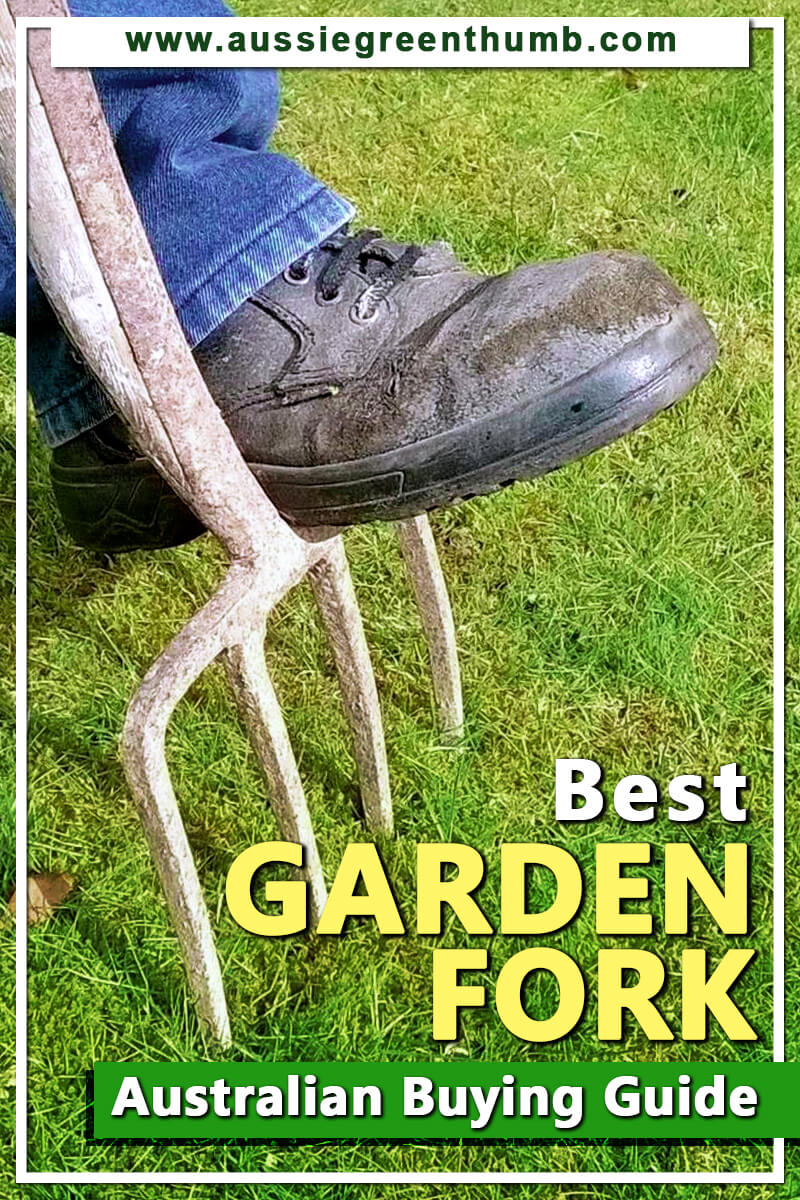
Get the Best Garden Fork and Make Turning Compost, Preparing Beds and More Simple!
A good quality garden fork is a very useful and rewarding tool to have in your gardening maintenance toolkit. Not only is it easy to maintain and store, it’s also powerful enough to take on some of the toughest jobs, from shifting rocks and mixing compost to aerating your lawn.
With the best garden fork, your garden will be easier to manage and work in, helping you to create a thriving flower or vegetable garden.
Published on January 25, 2023 by Gary Clarke
Last Updated on December 23, 2025

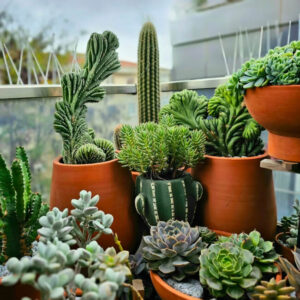

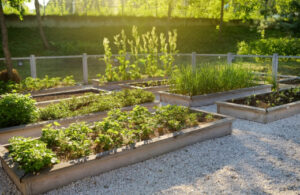

I like the part where you say not to buy cheap. I have make sure I buy all the things we need when it comes to buying quality for long lasting tools. My wife, she’s great, but she always goes for the cheapest item available, even if she has to buy them over and over. 🙂
We have to buy a garden fork this spring as I believe someone actually walked off with ours last season.
I’ve had shovels and garden forks that were not the best quality before and they have to be handled with kid’s gloves. Not the helpful tools I want to have. So my wife isn’t going to be buying.
That is exactly what happens these days. Because you can pick up tools for under $10 people buy cheap…every summer. No body thinks ‘if I spend $40 today I’ll have a tool for life’. They think ‘sweet, $10, done!’. What often happens is not only does the tool break but it does so BEFORE the job they bought it for is finished.
What I would really love is a communal shed with a good set of tools. I own a fork but don’t use it often – hence it is a cheaper model and suffers the defects you mentioned. There are a lot of tools I would like to own but can’t justify given the size of our yard – such as a mulcher which I would only use on occasion.
I agree Grendel! I dream of the day when I own a PROPER mulcher. I was conned into buying a cheap one once, except it wasn’t truly a mulcher and it barely did the job it was supposed to. I won’t be making that mistake again! Next time it is a proper one or nothing at all.